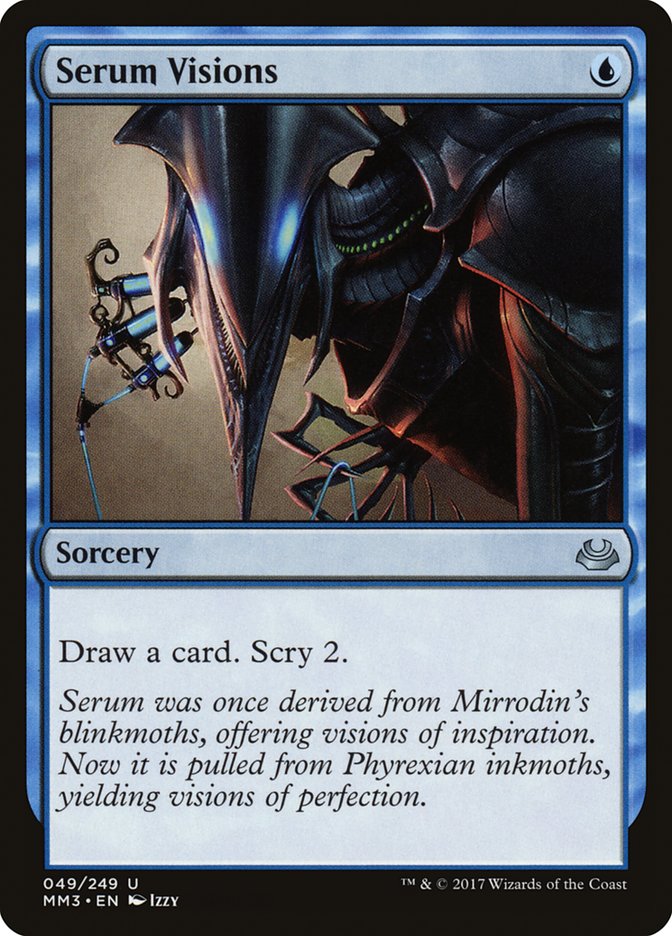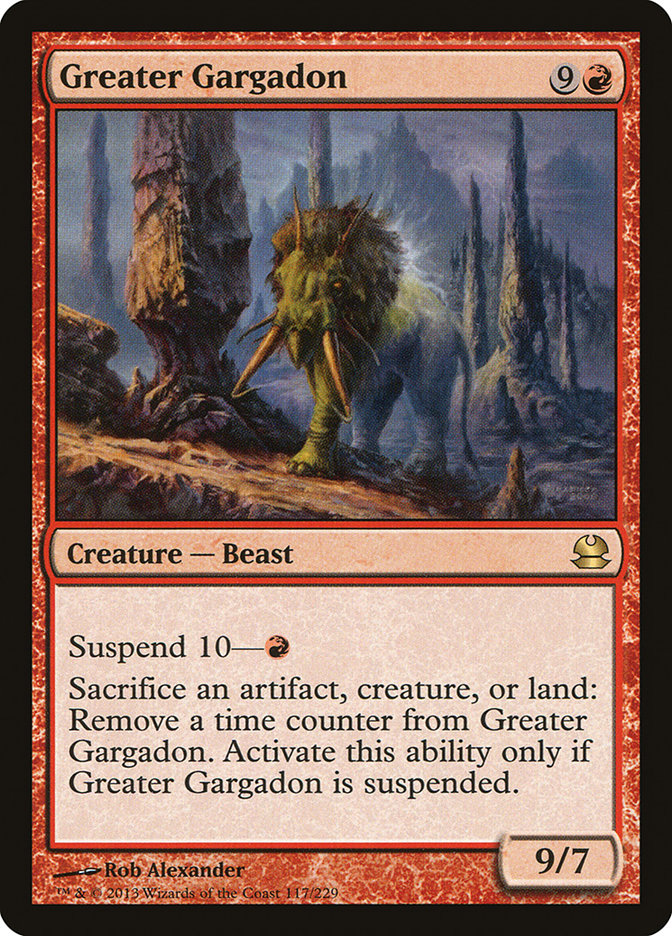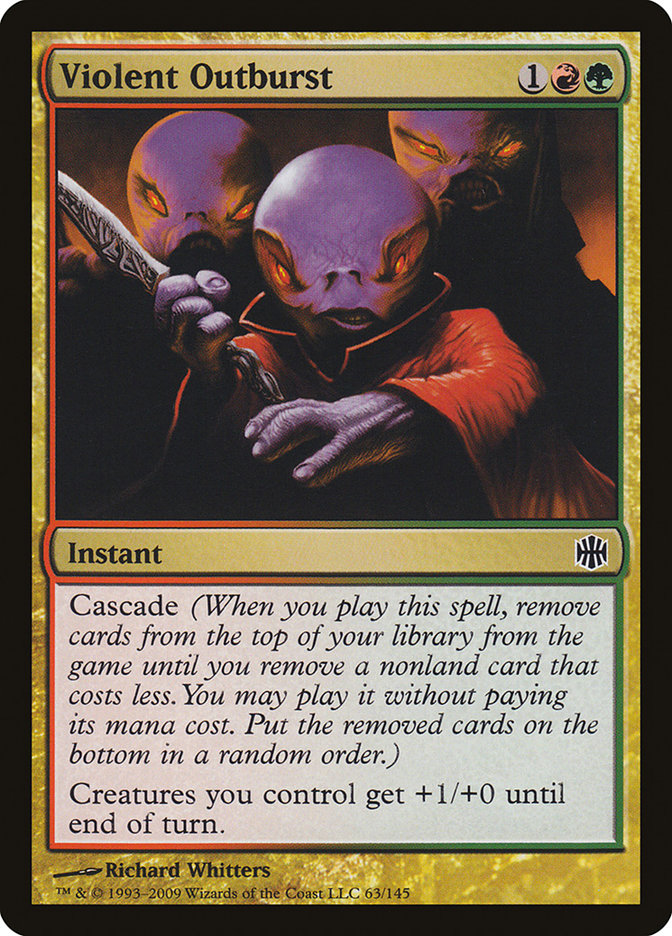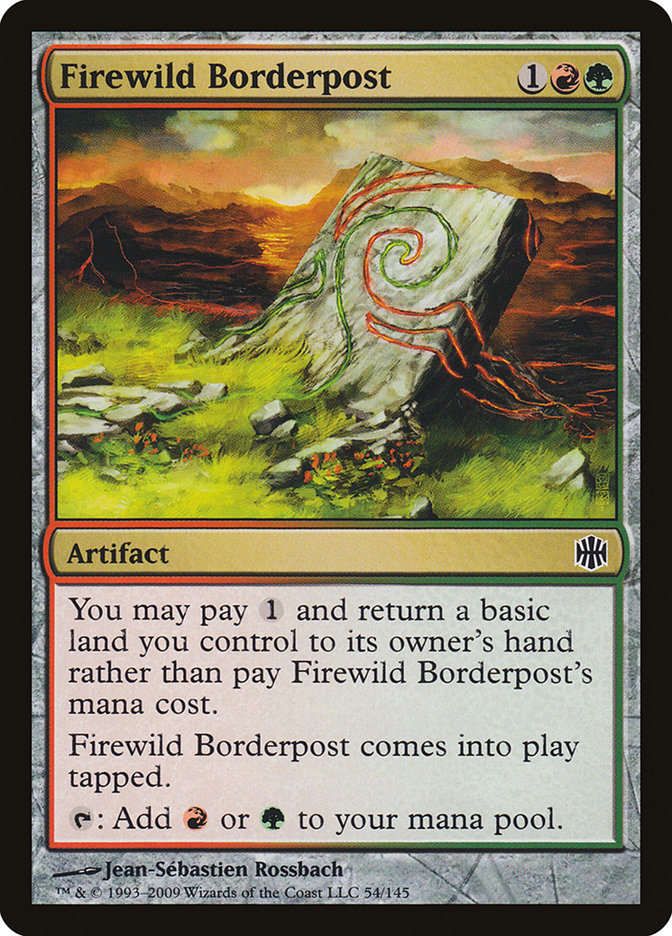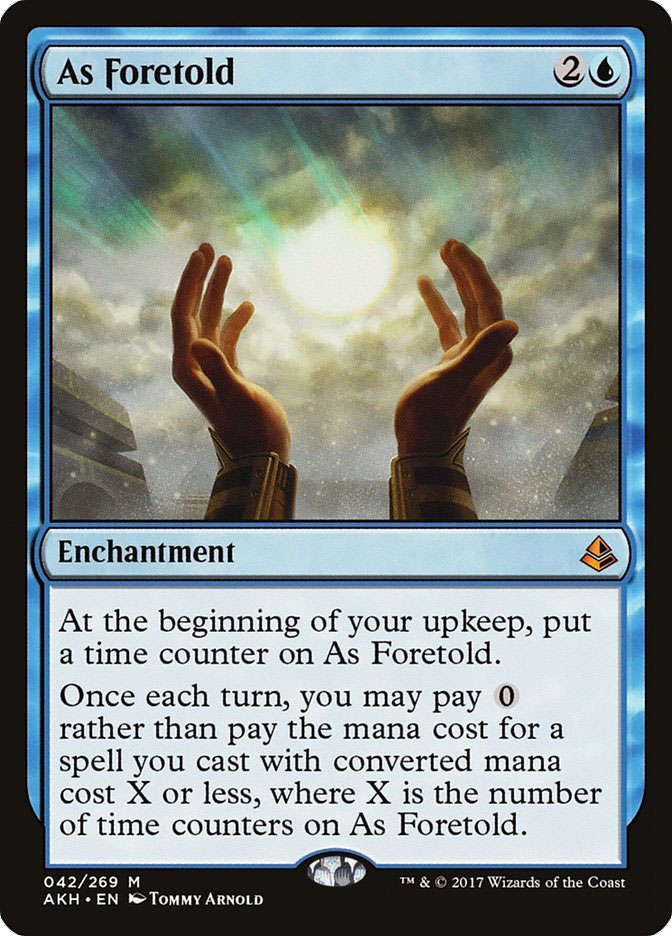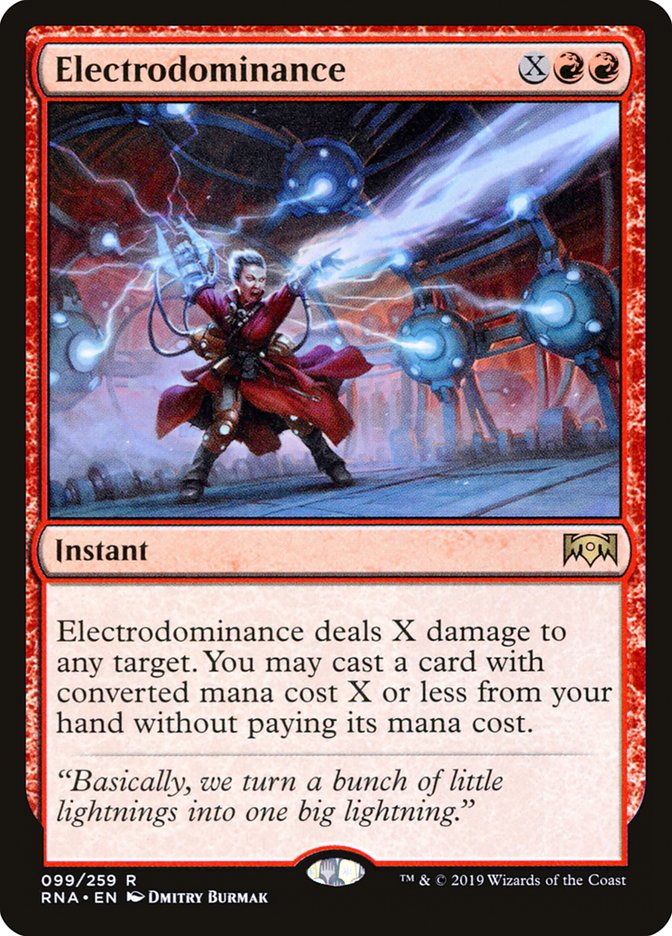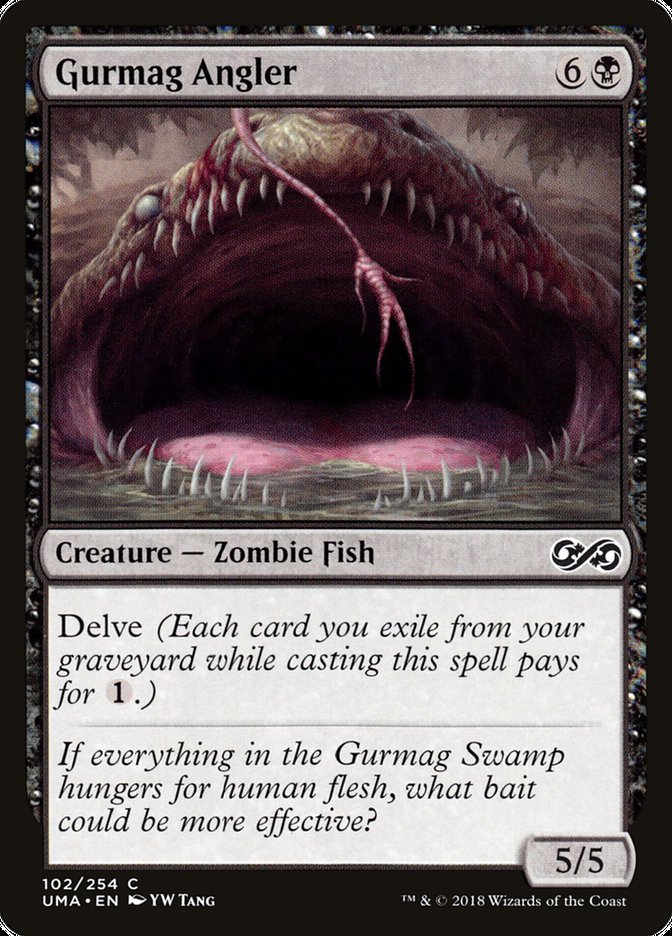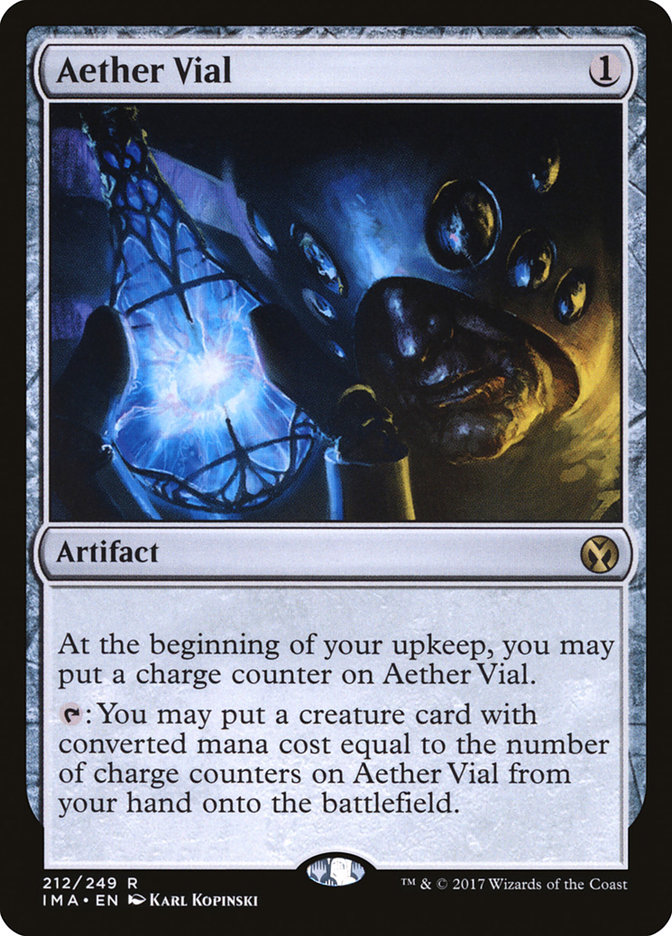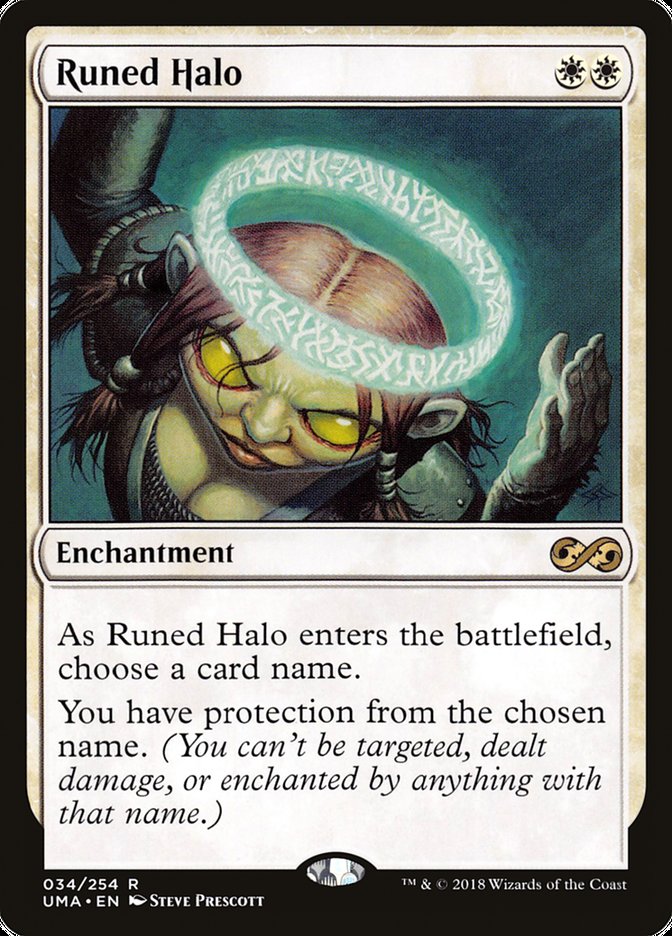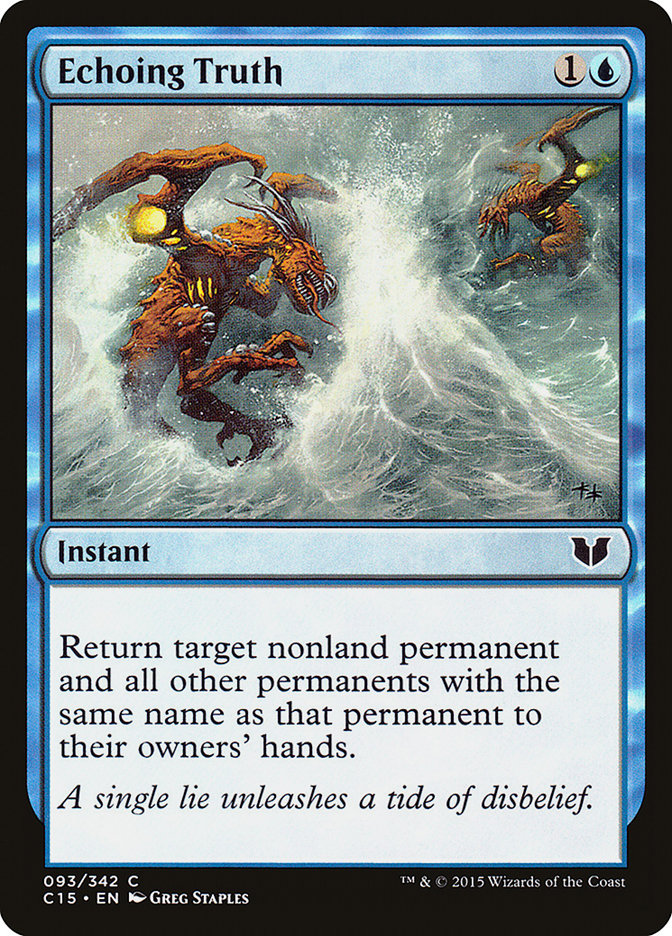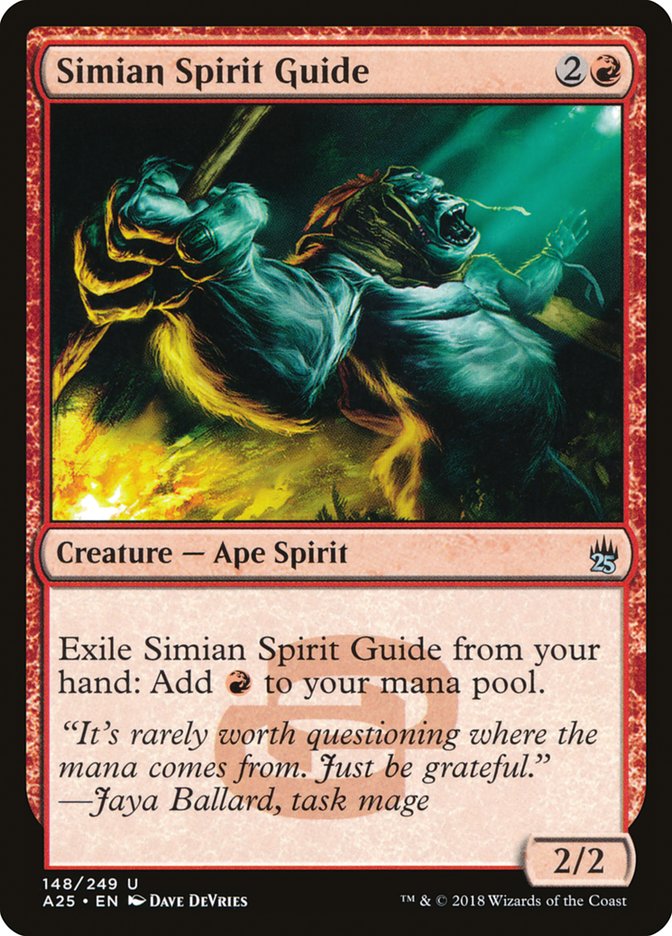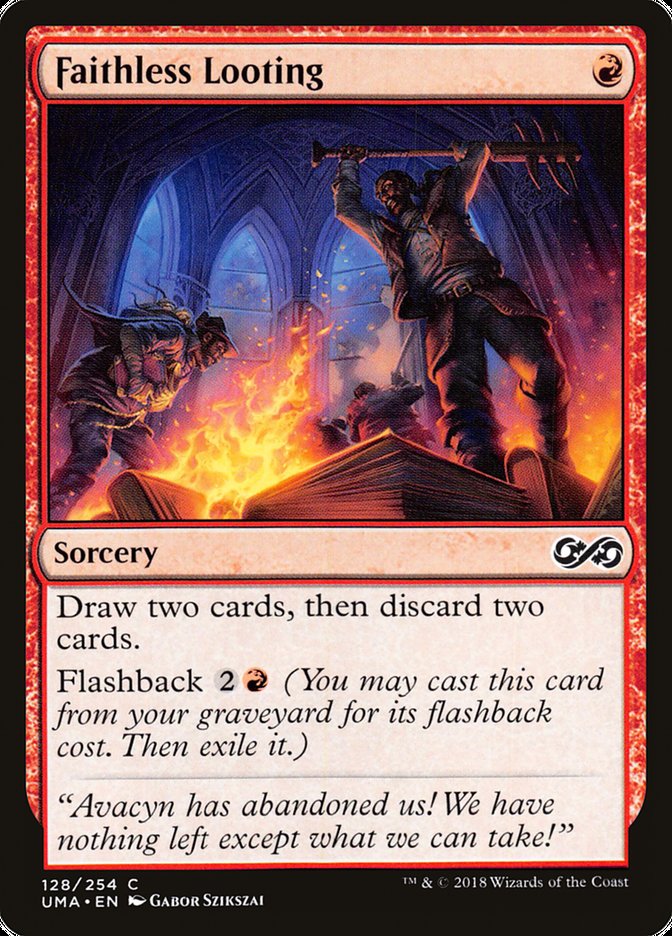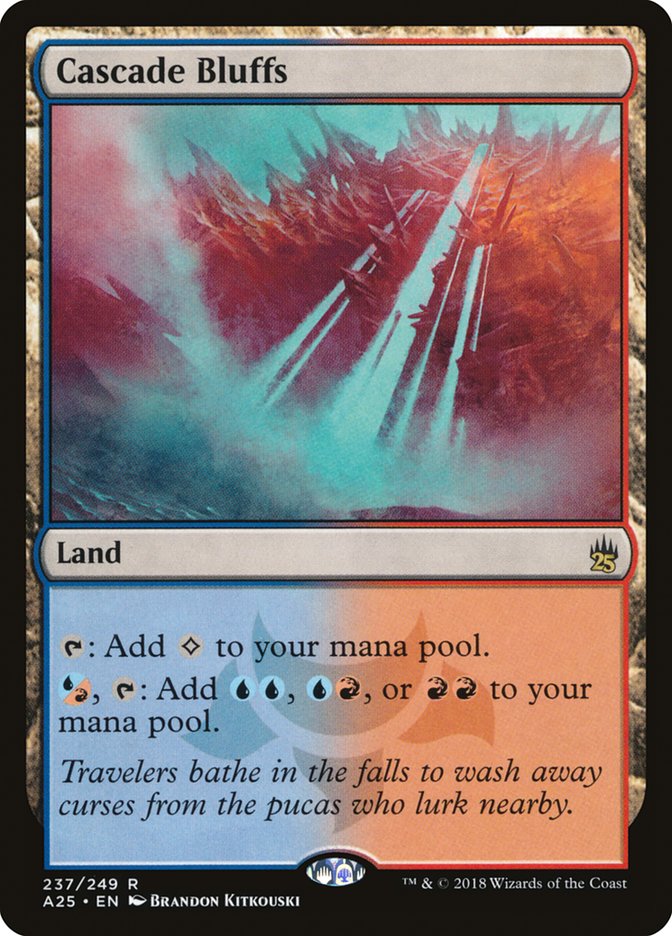Just over two years ago, I played Restore Balance at a Grand Prix. Because it was stupid and fun.
Creatures (9)
Planeswalkers (6)
Lands (16)
Spells (29)
- 3 Blood Moon
- 3 Restore Balance
- 4 Violent Outburst
- 4 Veinfire Borderpost
- 4 Firewild Borderpost
- 4 Demonic Dread
- 1 Wildfield Borderpost
- 2 Anger of the Gods
- 2 Mardu Charm
- 2 Anguished Unmaking
Sideboard

I felt like I learned my lesson. Despite a reasonable 10-5 result, I knew the deck was just not quite there. And time and time again I got asked “So what about Restore Balance?” and I had to be a reasonable adult and say “Yeah, not now, I don’t do that anymore.”
I was all good just looking at decklists and laughing it off.
Then I played against a new and improved Restore Balance deck in a Magic Online League. I won, but it felt like it was doing something different and powerful, but also the same stupid and fun nonsense as before.
So here we are.
Perfectly balanced, as all things should be. pic.twitter.com/MwZ7v51zyI
— Ari Lax (@armlx) March 28, 2019
Modern as Richard Garfield intended. pic.twitter.com/MZ237bTQVj
— Ari Lax (@armlx) March 28, 2019
Starting Off
My understanding is that a lot of people have tried similar lists on streams in the past to some success, including Shaun McLaren and Gabriel Nassif.
I started here, with a list that a Magic Online player named JMM had been winning with recently.
Creatures (6)
Planeswalkers (1)
Lands (21)
Spells (32)
- 4 Serum Visions
- 4 Opt
- 1 Tormod's Crypt
- 3 Remand
- 4 Ancestral Vision
- 4 Restore Balance
- 1 Relic of Progenitus
- 1 Flame Slash
- 4 As Foretold
- 2 Abrade
- 4 Electrodominance
Sideboard

I had some thoughts to start off, but I wasn’t going to mess up what was clearly an at least semi-functional by throwing my oddball ideas in.
As a rule of thumb, I believe via Paul Rietzl if I’m in the business of name-dropping, you should play two Magic Online Leagues with a new deck before really judging it. I like to think I’m ahead of the curve on evaluating decks on small sample sizes and often just go off one League, especially because I have a good basis on most of the format.
Competitive Magic is the art of correctly generalizing from sample sizes too small to draw real conclusions.
— Andrew Elenbogen (@Ajelenbogen) January 10, 2019
After about three matches, it was very obvious I was in for a two-League process. Even having played the card before, the current Restore Balance deck is weird.
The thing that threw me at first is how different having cantrips and lands instead of cascade and Borderposts made the deck. With the old Restore Balance deck, you could just fire away without Greater Gargadon and reduce your opponent to maybe a land while you had resources to work with. With the Izzet deck, Restore Balance without Greater Gargadon is just a Wrath of God with maybe some small bonus card advantage spliced on. It isn’t something you just throw out to broad-spectrum disrupt your opponent.
In a lot of matchups, Izzet Restore Balance is a three-card combo deck where the pieces are Restore Balance, a way to cast it, and Greater Gargadon. You spend as much time as you can assembling the combo, and then blow up all their lands and make a 9/7. The reason it works out is that you have lots of dig and lots of partial combos to bridge the gap, like using As Foretold to cast Ancestral Vision or firing off an early Restore Balance.
The other thing that threw me is that As Foretold and Electrodominance just do weird stuff, especially if you are casting Restore Balance at instant speed. I’m just going to start throwing a list out there.
- Opt is great because you can cast it off As Foretold on an opponent’s turn. This can come up a lot if you are trying to sequence more setup the turn after you resolve Ancestral Vision off As Foretold. Similarly, As Foretold on two or more can leave up Remand or Dispel.
- Electrodominance can be cast in response to a lot of different actions to reduce your visible cards for Restore Balance. You can cast it in response to a fetchland activation or an Opt. The wildest I got was casting multiple Abrades on a Tormod’s Crypt, casting Electrodominance and Restore Balance, and then exiling their graveyard with Crypt after those spells resolved but before Abrade did.
- You can cast Electrodominance off As Foretold. X will equal zero, but this lets you use As Foretold “mana” to bridge to an instant-speed Restore Balance.
- Electrodominance does damage if you pay mana. I used this multiple times to hold a planeswalker off ultimate while casting Restore Balance and then allowing Greater Gargadon another turn or two to resolve and close out.
- Electrodominance lets you Restore Balance at instant speed. Some good times: your upkeep with an Ancestral Vision on the stack, their draw step so that they lose more cards in hand, and when they tap out on your end step with their Vendilion Clique trigger on the stack.
- Stacking stuff with Greater Gargadon can get tricky. If you aren’t going to be removing all the counters from it by sacrificing all your stuff, you generally want to respond to your Restore Balance to prevent them from responding to a sacrifice in weird ways like Cryptic Command bouncing As Foretold. You can always sacrifice any number of permanents to it by responding over and over, regardless of the number of time counters on it. If it is going to run out of time counters and you have Electrodominance, you want to stack all the sacrifices and then respond with Electrodominance into Restore Balance so the Gargadon comes down after.
- Your opponent can float mana in response to Restore Balance. Casting it in their main phase or putting yourself in a spot where that could be required is not advised, and sometimes this means you want to Restore Balance on a different phase from the one where Greater Gargadon unsuspends so it doesn’t get Path to Exiled with their floating mana.
- There’s a lot of thinking about what happens if your opponent has follow-up lands or something. “Or something” is really too variable to discuss here, but if I’m going to be stuck with cards after Restore Balance, I’m a big fan of being able to play lands and possibly cast spells after in case Greater Gargadon won’t get there. Whether you play an additional land as an extra sacrifice or hold it to rebuild is a really common and complex decision.
Still, I went 4-1 in both Leagues, beating multiple Grixis Death’s Shadow lists, multiples of Mono-Green Tron, multiple blue control decks, and even an Izzet Phoenix for good measure. I did lose a match to Mono-Green Tron, and I died to Azorius Spirits. That’s a lot of things I thought would be bad matchups, and only Spell Queller reliably getting in my way. For a deck I didn’t feel comfortable with, that’s a lot of winning.
Initial Thoughts and Feelings
I originally felt like I was short some way to interact with specific creatures, but as I started playing the deck more like a full combo deck I realized it’s not quite that necessary. You should be putting your opponent in a spot where they don’t get to cast a follow-up threat, and their first creatures should just die. It would be nice to interact, as it gives you more room to maneuver when comboing, but that’s not the big purpose of Abrade and Flame Slash.
There definitely are times where you have to fade a one-land, one-spell recovery from your opponent, usually Death’s Shadow or Gurmag Angler, but as I mentioned, this deck is reasonably good at setting up its own recovery from a Restore Balance land sweep to compete.
The problem cards were the same problems Restore Balance has always had. Planeswalkers, artifacts, and enchantments all survive your sweep. Abrade covers artifacts and there aren’t many enchantments around (even if I had to win an absurd match against Enduring Ideal), but planeswalkers kept coming up. I was always able to narrowly defeat them with some combination of Electrodominance for small numbers and drawing exactly enough lands to feed a Gargadon to kill them before they went ultimate, but an easy out would be nice.
Luckily for me, a friend had already answered this with a question last week. Why aren’t more people playing Echoing Truth in Modern? It covers all those permanent types, covers multiple Arclight Phoenixes, and turns into permanent removal when you plan on destroying all their lands. You even get the card you invested back from them after you Restore Balance!
I also considered similar effects like Void Snare and Boomerang, but figured I would start on Echoing Truth as the format baseline and see where that led me.
I also thought about Cryptic Command, but combining expensive cards with Restore Balance has a lot of issues. They get stuck in your hand both before and after the sweep, making it harder to clear out your opponent’s resources and still being terrible after.
The second basic Mountain was overkill. My instinct was that you should be playing more Simian Spirit Guide instead. The reason is that card is messed up, and it’s worth trying to make your deck more messed up if possible.
Going down the list of busted cards that could be added, Faithless Looting comes to mind. You end up using a lot of your cardboard in this deck for various reasons and don’t have graveyard synergies, so I think you would be in the Grixis Death’s Shadow camp of only playing one or two as your last cantrip. You oddly both have a few extra cards you might not need right now, but at the same time the second Ancestral Vision or As Foretold or even your seventh land often ends up getting used. I didn’t end up adding it after my initial pass, but it could be worth a single slot somewhere.
I wasn’t in love with Jace, the Mind Sculptor. I think you need some win condition other than Greater Gargadon just in case, but at the same time it’s hard to protect Jace before a Balance, hard to cast it and a Balance in the same turn, and hard to cast it after.
I wasn’t quite sure what to do here, so I didn’t change it. Chandra, Torch of Defiance notably lets you +1 for red mana to immediately Electrodominance, but Jace is so much better at finding the combo. I also haven’t done a Gatherer search for artifacts or enchantments that fit this role, so there may be something you don’t have to protect that does work.
What about a splash? You would get access to good answers and more potential planeswalkers.
Unfortunately, I don’t think the mana can quite handle it. You need access to blue on Turn 1, but also sometimes red on Turn 1, and double red on Turn 2, and double blue on Turn 3, and then also you want some basic Islands for Blood Moon. You can try, but I think it involves cutting down on the number of actual Izzet-mana-producing lands, which are huge for ensuring the early color flexibility you need.
I guess that pushes us along to the sideboard. Again, I’m just going to fire off a list of good things.
- Relic of Progenitus is definitely the correct graveyard hate once you’re playing the required one Tormod’s Crypt to tutor for. Your deck is naturally soft to Surgical Extraction on your key card, you can tap Relic of Progenitus targeting yourself to protect against that, and almost all of the Surgical Extraction decks are also places you don’t mind Relic as proactive graveyard hate. Just taking out graveyard counterspells from a control deck is huge for a combo deck like this.
- I’m not touching Anger of the Gods even if I almost never used it. Having extra sweepers against creature decks is great, especially when they have unique names to dodge Meddling Mage. Restore Balance is also fundamentally bad against Dredge. You’re trying to put all their cards in their graveyard. They are also trying to put all their cards in their graveyard. Any help there is great.
- Dispel is just good. The cheapest counterspell to protect your combo.
- One Blood Moon is weak. It’s the kind of card that skews how you have to set up your mana in a game, so you should either be playing multiples or none.
- The rest of the sideboard is negotiable nonsense.
Round 2… Fight!
This is what I fired back into the breach for the next League.
Creatures (8)
Planeswalkers (1)
Lands (20)
Spells (31)
- 4 Serum Visions
- 2 Echoing Truth
- 4 Opt
- 1 Tormod's Crypt
- 3 Remand
- 4 Ancestral Vision
- 4 Restore Balance
- 4 As Foretold
- 1 Abrade
- 4 Electrodominance
Sideboard

My follow-up League was a significantly less successful 2-3, but the updates felt great. Notably I was able to kick off the first round with an As Foretold accelerated with double Simian Spirit Guide, and Echoing Truth definitely targeted the full spectrum of permanent types.
Moving Forward
I still don’t know if Restore Balance is the real deal, but it’s certainly close.
The biggest issue with the deck is still the same as it was before. There are a lot of things within Modern that cause problems and avoid your core combo. But unlike before, you have a normal set of cantrips to help you find your answers. I think a big part of playing Restore Balance is going to be tuning those last sideboard slots to cover the interaction you expect. Converting those slots from “negotiable nonsense” to key role-players is the next big goal for this deck.
If you want to play Restore Balance, the deck gains a lot if you take a deep dive into working on it. Not only is there a lot of fine-tuning that needs to happen, but the deck is extremely complex. I don’t think it’s uniquely difficult once you learn all the weird things you have to consider and can go through that mental checklist, but building up that knowledge is going to take some trial and error.


